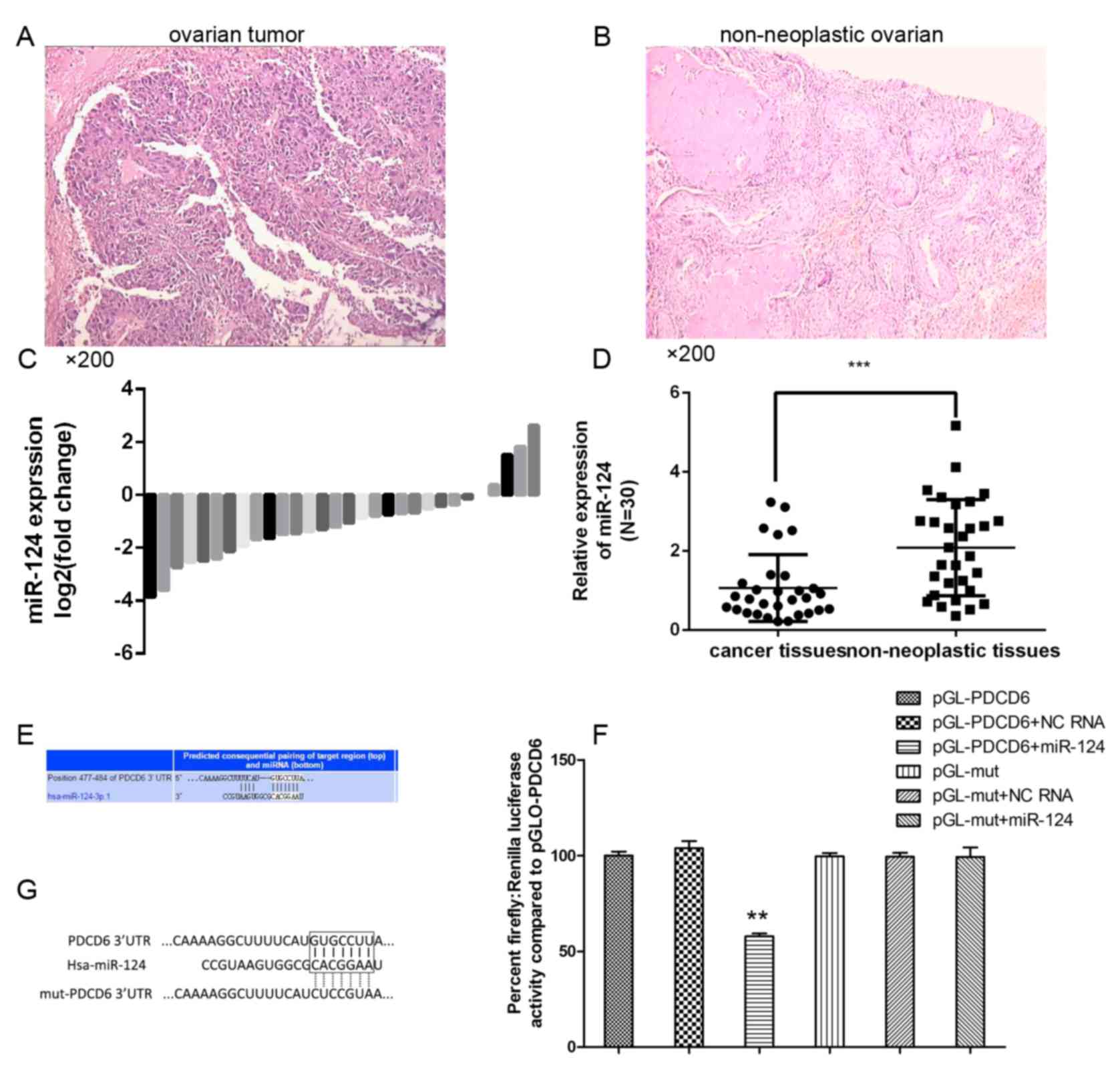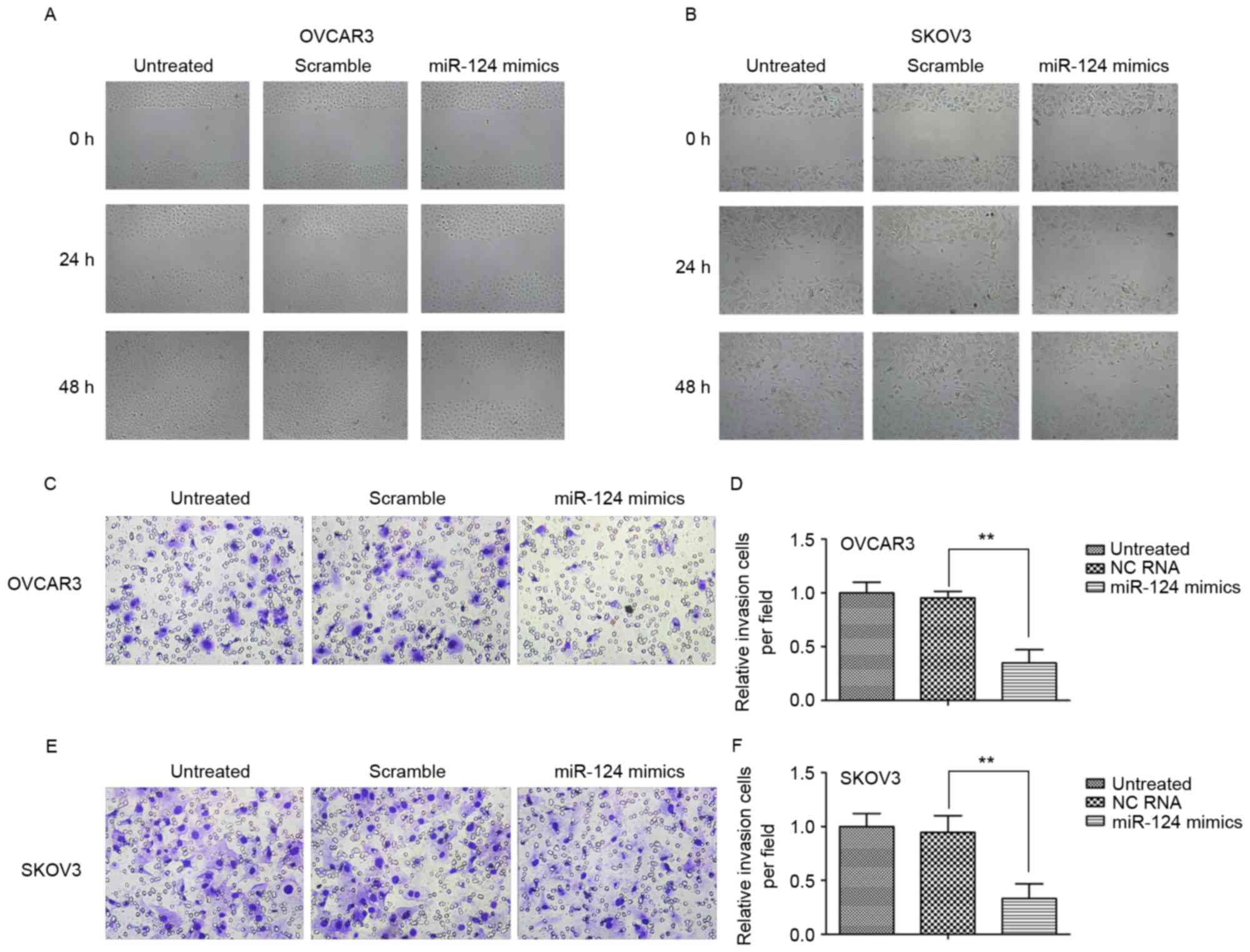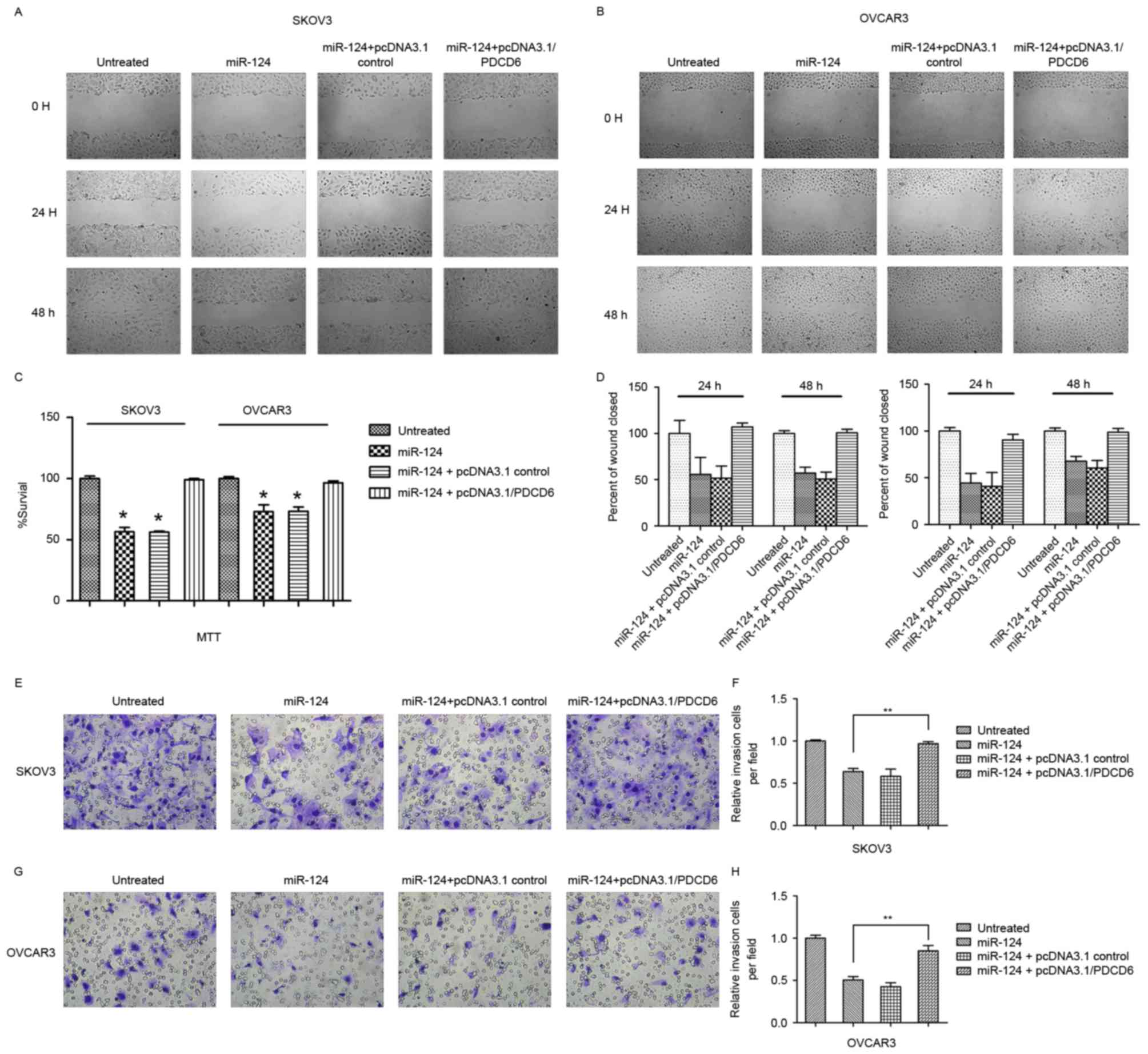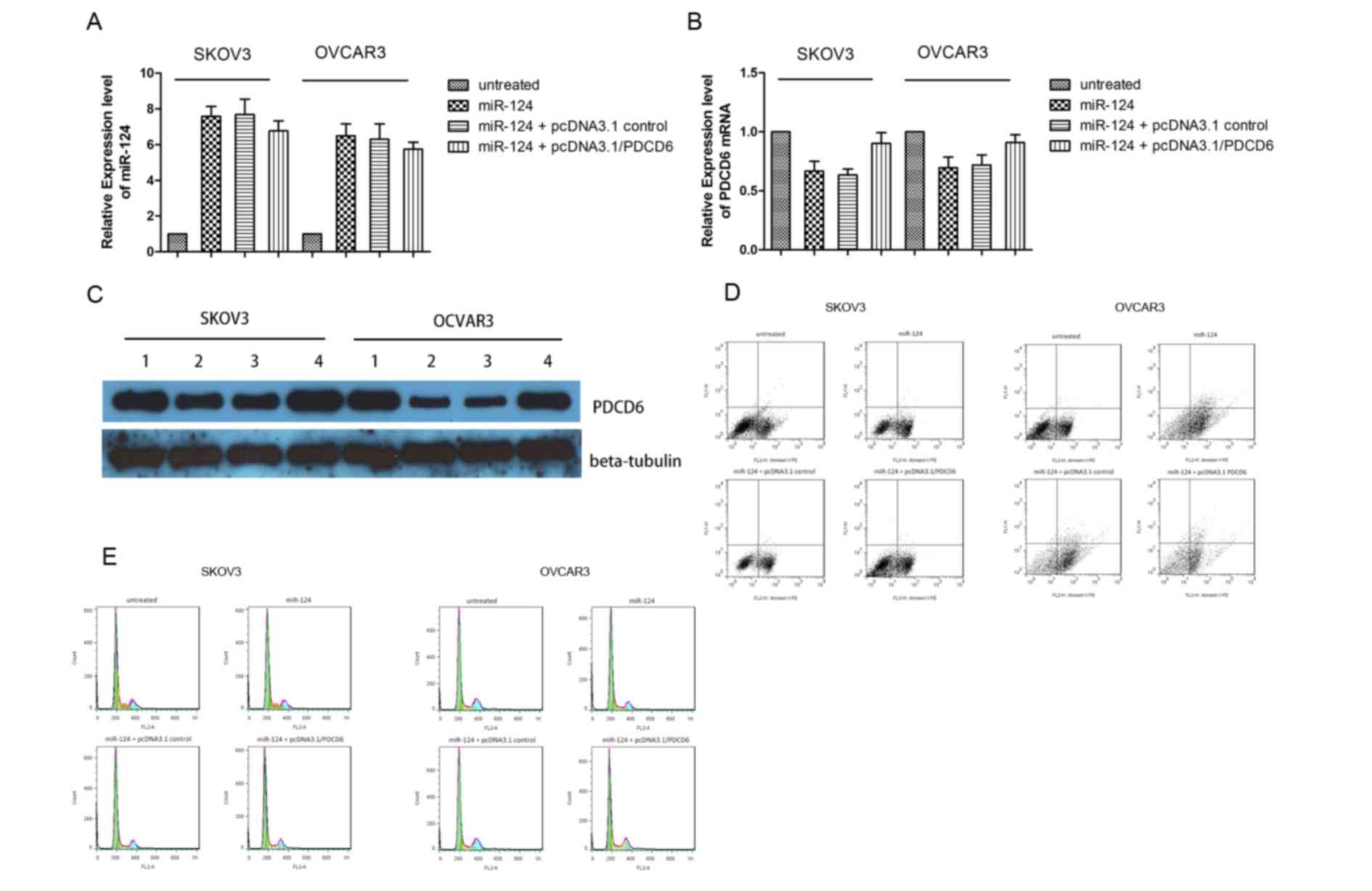|
1
|
Farazi TA, Hoell JI, Morozov P and Tuschl
T: MicroRNAs in human cancer. Adv Exp Med Biol. 774:1–20. 2013.
View Article : Google Scholar : PubMed/NCBI
|
|
2
|
Lu J, Getz G, Miska EA, Alvarez-Saavedra
E, Lamb J, Peck D, Sweet-Cordero A, Ebert BL, Mak RH, Ferrando AA,
et al: MicroRNA expression profiles classify human cancers. Nature.
435:834–838. 2005. View Article : Google Scholar : PubMed/NCBI
|
|
3
|
Iorio MV and Croce CM: MicroRNAs in
cancer: Small molecules with a huge impact. J Clin Oncol.
27:5848–5856. 2009. View Article : Google Scholar : PubMed/NCBI
|
|
4
|
Iorio MV, Visone R, Di Leva G, Donati V,
Petrocca F, Casalini P, Taccioli C, Volinia S, Liu CG, Alder H, et
al: MicroRNA signatures in human ovarian cancer. Cancer Res.
67:8699–8707. 2007. View Article : Google Scholar : PubMed/NCBI
|
|
5
|
Abba M, Mudduluru G and Allgayer H:
MicroRNAs in cancer: Small molecules, big chances. Anticancer
Agents Med Chem. 12:733–743. 2012. View Article : Google Scholar : PubMed/NCBI
|
|
6
|
Gandellini P, Giovannetti E and Nicassio
F: MicroRNAs in cancer management: Big challenges for small
molecules. Biomed Res Int. 2015:9821562015. View Article : Google Scholar : PubMed/NCBI
|
|
7
|
Calin GA, Sevignani C, Dumitru CD, Hyslop
T, Noch E, Yendamuri S, Shimizu M, Rattan S, Bullrich F, Negrini M
and Croce CM: Human microRNA genes are frequently located at
fragile sites and genomic regions involved in cancers. Proc Natl
Acad Sci USA. 101:pp. 2999–3004. 2004, View Article : Google Scholar : PubMed/NCBI
|
|
8
|
Kim K, Zang R, Choi SC, Ryu SY and Kim JW:
Current status of gynecological cancer in China. J Gynecol Oncol.
20:72–76. 2009. View Article : Google Scholar : PubMed/NCBI
|
|
9
|
Lees B and Leath CA III: The impact of
diabetes on gynecologic cancer: Current status and future
directions. Curr Obstet Gynecol Rep. 4:234–239. 2015. View Article : Google Scholar : PubMed/NCBI
|
|
10
|
Pal MK, Jaiswar SP, Dwivedi VN, Tripathi
AK, Dwivedi A and Sankhwar P: MicroRNA: A new and promising
potential biomarker for diagnosis and prognosis of ovarian cancer.
Cancer Biol Med. 12:328–341. 2015.PubMed/NCBI
|
|
11
|
Langhe R: microRNA and ovarian cancer. Adv
Exp Med Biol. 889:119–151. 2015. View Article : Google Scholar : PubMed/NCBI
|
|
12
|
Maalouf SW, Liu WS and Pate JL: MicroRNA
in ovarian function. Cell Tissue Res. 363:7–18. 2016. View Article : Google Scholar : PubMed/NCBI
|
|
13
|
Zaman MS, Maher DM, Khan S, Jaggi M and
Chauhan SC: Current status and implications of microRNAs in ovarian
cancer diagnosis and therapy. J Ovarian Res. 5:442012. View Article : Google Scholar : PubMed/NCBI
|
|
14
|
Zhang Y, Zheng L, Huang J, Gao F, Lin X,
He L, Li D, Li Z, Ding Y and Chen L: MiR-124 Radiosensitizes human
colorectal cancer cells by targeting PRRX1. PLoS One. 9:e939172014.
View Article : Google Scholar : PubMed/NCBI
|
|
15
|
Zhang W, Mao YQ, Wang H, Yin WJ, Zhu SX
and Wang WC: MiR-124 suppresses cell motility and adhesion by
targeting talin 1 in prostate cancer cells. Cancer Cell Int.
15:492015. View Article : Google Scholar : PubMed/NCBI
|
|
16
|
Lu Y, Yue X, Cui Y, Zhang J and Wang K:
MicroRNA-124 suppresses growth of human hepatocellular carcinoma by
targeting STAT3. Biochem Biophys Res Commun. 441:873–879. 2013.
View Article : Google Scholar : PubMed/NCBI
|
|
17
|
Zheng YB, Xiao GC, Tong SL, Ding Y, Wang
QS, Li SB and Hao ZN: Paeoniflorin inhibits human gastric carcinoma
cell proliferation through up-regulation of microRNA-124 and
suppression of PI3K/Akt and STAT3 signaling. World J Gastroenterol.
21:7197–7207. 2015. View Article : Google Scholar : PubMed/NCBI
|
|
18
|
Vito P, Lacanà E and D'Adamio L:
Interfering with apoptosis: Ca(2+)-binding protein ALG-2 and
Alzheimer's disease gene ALG-3. Science. 271:521–525. 1996.
View Article : Google Scholar : PubMed/NCBI
|
|
19
|
la Cour JM, Høj BR, Mollerup J, Simon R,
Sauter G and Berchtold MW: The apoptosis linked gene ALG-2 is
dysregulated in tumors of various origin and contributes to cancer
cell viability. Mol Oncol. 1:431–439. 2008. View Article : Google Scholar : PubMed/NCBI
|
|
20
|
D'Adamio L, Lacanà E and Vito P:
Functional cloning of genes involved in T-cell receptor-induced
programmed cell death. Semin Immunol. 9:17–23. 1997. View Article : Google Scholar : PubMed/NCBI
|
|
21
|
Mahul-Mellier AL, Strappazzon F, Petiot A,
Chatellard-Causse C, Torch S, Blot B, Freeman K, Kuhn L, Garin J,
Verna JM, et al: Alix and ALG-2 are involved in tumor necrosis
factor receptor 1-induced cell death. J Biol Chem. 283:34954–34965.
2008. View Article : Google Scholar : PubMed/NCBI
|
|
22
|
Giulietti A, Overbergh L, Valckx D,
Decallonne B, Bouillon R and Mathieu C: An overview of real-time
quantitative PCR: Applications to quantify cytokine gene
expression. Methods. 25:386–401. 2001. View Article : Google Scholar : PubMed/NCBI
|
|
23
|
Dwivedi SK, Mustafi SB, Mangala LS, Jiang
D, Pradeep S, Rodriguez-Aguayo C, Ling H, Ivan C, Mukherjee P,
Calin GA, et al: Therapeutic evaluation of microRNA-15a and
microRNA-16 in ovarian cancer. Oncotarget. 7:15093–15104. 2016.
View Article : Google Scholar : PubMed/NCBI
|
|
24
|
Cheng CJ, Bahal R, Babar IA, Pincus Z,
Barrera F, Liu C, Svoronos A, Braddock DT, Glazer PM, Engelman DM,
et al: MicroRNA silencing for cancer therapy targeted to the tumour
microenvironment. Nature. 518:107–110. 2015. View Article : Google Scholar : PubMed/NCBI
|
|
25
|
Maltby S, Plank M, Tay HL, Collison A and
Foster PS: Targeting MicroRNA function in respiratory diseases:
Mini-review. Front Physiol. 7:212016. View Article : Google Scholar : PubMed/NCBI
|
|
26
|
Zhang H, Wang Q, Zhao Q and Di W: MiR-124
inhibits the migration and invasion of ovarian cancer cells by
targeting SphK1. J Ovarian Res. 6:842013. View Article : Google Scholar : PubMed/NCBI
|
|
27
|
la Cour JM, Mollerup J, Winding P,
Tarabykina S, Sehested M and Berchtold MW: Up-regulation of ALG-2
in hepatomas and lung cancer tissue. Am J Pathol. 163:81–89. 2003.
View Article : Google Scholar : PubMed/NCBI
|
|
28
|
Su D, Xu H, Feng J, Gao Y, Gu L, Ying L,
Katsaros D, Yu H, Xu S and Qi M: PDCD6 is an independent predictor
of progression free survival in epithelial ovarian cancer. J Transl
Med. 10:312012. View Article : Google Scholar : PubMed/NCBI
|
|
29
|
Jung YS, Kim KS, Kim KD, Lim JS, Kim JW
and Kim E: Apoptosis-linked gene 2 binds to the death domain of Fas
and dissociates from Fas during Fas-mediated apoptosis in Jurkat
cells. Biochem Biophys Res Commun. 288:420–426. 2001. View Article : Google Scholar : PubMed/NCBI
|
|
30
|
Zhou B, Bai P, Xue H, Zhang Z, Shi S,
Zhang K, Wang Y, Wang K, Quan Y, Song Y and Zhang L: Single
nucleotide polymorphisms in PDCD6 gene are associated with the
development of cervical squamous cell carcinoma. Fam Cancer.
14:1–8. 2015. View Article : Google Scholar : PubMed/NCBI
|
|
31
|
Jang IK, Hu R, Lacaná E, D'Adamio L and Gu
H: Apoptosis-linked gene 2-deficient mice exhibit normal T-cell
development and function. Mol Cell Biol. 22:4094–4100. 2002.
View Article : Google Scholar : PubMed/NCBI
|
|
32
|
Aviel-Ronen S, Coe BP, Lau SK, da Cunha
Santos G, Zhu CQ, Strumpf D, Jurisica I, Lam WL and Tsao MS:
Genomic markers for malignant progression in pulmonary
adenocarcinoma with bronchioloalveolar features. Proc Natl Acad Sci
USA. 105:pp. 10155–10160. 2008, View Article : Google Scholar : PubMed/NCBI
|
|
33
|
Mahul-Mellier AL, Hemming FJ, Blot B,
Fraboulet S and Sadoul R: Alix, making a link between
apoptosis-linked gene-2, the endosomal sorting complexes required
for transport, and neuronal death in vivo. J Neurosci. 26:542–549.
2006. View Article : Google Scholar : PubMed/NCBI
|
|
34
|
Suzuki K, Dashzeveg N, Lu ZG, Taira N,
Miki Y and Yoshida K: Programmed cell death 6, a novel
p53-responsive gene, targets to the nucleus in the apoptotic
response to DNA damage. Cancer Sci. 103:1788–1794. 2012. View Article : Google Scholar : PubMed/NCBI
|
|
35
|
Høj BR, la Cour JM, Mollerup J and
Berchtold MW: ALG-2 knockdown in HeLa cells results in G2/M cell
cycle phase accumulation and cell death. Biochem Biophys Res
Commun. 378:145–148. 2009. View Article : Google Scholar : PubMed/NCBI
|
|
36
|
la Cour JM, Mollerup J, Winding P,
Tarabykina S, Sehested M and Berchtold MW: Up-regulation of ALG-2
cancer tissue in hepatomas and lung. Am J Pathol. 163:81–89. 2003.
View Article : Google Scholar : PubMed/NCBI
|













